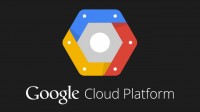Google’s Media CDN Provides Content Streaming Automation
April 28, 2022
Streaming is booming, accounting for 53.7 percent of Internet bandwidth traffic, up by 4.8 percent for the year according to Google, which anticipates continued growth as gaming, social networks, AR and VR experiences take hold. To service those needs, the Alphabet unit is officially launching Media CDN, an extensible Google Cloud platform for the distribution of streaming content. At the 2022 NAB Show Streaming Summit this week, Google touted Media CDN as a more affordable and efficient way for media and entertainment companies to deliver immersive streaming experiences globally and at scale.
“The same infrastructure that Google has built over the last decade to serve YouTube content to over 2 billion users is now being leveraged to deliver media at scale to Google Cloud customers with Media CDN,” Google Cloud VP and GM of networking Shailesh Shukla wrote in a blog post, explaining the technology already has a presence in more than 1,300 cities across 200 countries.

The nearly 54 percent of online bandwidth devoted to streaming (per Sandvine’s Global Internet Phenomena Report) is already “straining existing infrastructure” and driving a shift by media companies to public clouds, Shukla writes.
Google Cloud’s newest content delivery network service joins its existing CDN portfolio, but the company cites unique benefits, including individual condition-based user/network delivery protocols as well as offload rates Shukla calls “industry-leading.” Other features include:
- Video Stitcher API — a dynamic ad insertion tool that Google says allows streaming providers to improve monetization through integrated ad serving via video content manipulation.
- Transcoder API — part of an extensible ecosystem that helps customers simplify operations. Another tool, Live Stream API, transcodes mezzanine live signals into direct-to-consumer streaming formats for multiple device platforms.
- AI/Machine Learning — gives viewers “more control over how they see, experience, and even interact with content. For example, sports fans watching a game can obtain real-time stats and analytics, viewers can purchase items from virtual billboards.”
- Multiple Caching Tiers — minimize calls-to-origin, even for infrequently accessed content, which alleviates performance or capacity stress, saving money.
“Google is a small fish in a big pond when it comes to the market for CDN services,” writes TechCrunch, noting that “in 2019, IDC estimated that Akamai controlled 42 percent of the CDN market. After Akamai, ChinaNetCenter held 13 percent of the market that year, while Verizon had about 5 percent.”
However, Gartner senior research director Eric Schmitt tells TechCrunch that Media CDN “sets the stage to substantially expand Google’s dominance of streaming video and web advertising” by commercializing YouTube’s pipes.
In its Q1 2022 earnings report, Alphabet said Google Cloud grew 43 percent, to $5.8 billion, but increased its operating loss to $931 million.

No Comments Yet
You can be the first to comment!
Sorry, comments for this entry are closed at this time.